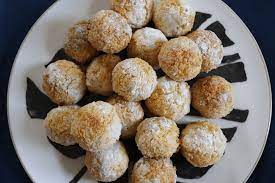A Taste of Africa: Harissa Roasted Turkey
Getting to know Africa includes experiencing the vastly different - and yummy - expressions of each culture through food..
After Thanksgiving, each year, you can often take advantage of post-holiday turkey sales at your local grocers. Try this North African inspired recipe. Harissa is a spice often used in Moroccan foods. Basically, a hot chili sauce comprised of several varieties of peppers, spices and herbs. This kicks up the flavour immensely! You can keep any leftover rub in the fridge for a couple of weeks and enjoy it on all sorts of things. We use it on both chicken and steak. Delicious!

We love sharing our family recipes with you but please remember you can search online and find lots of variations on this dish and other terrific African recipes. An online recipe site we use over and over again is The Congo Cookbook. My East Africa Journal is also a great source for recipes.
INGREDIENTS
While there are quite a few ingredients, don't be discouraged. This recipe is quite easy to put together and the results are well worth it.
Harissa Spice Rub
- 3/4 cup olive oil
- 2 tablespoons chopped fresh mint
- 1 teaspoon salt
- 2 minced garlic cloves
- 1 teaspoon ground caraway seed
- 1 cup chili powder
- 1 tablespoon ground coriander
- 12 to 14 pound turkey
- 3 cups chicken broth
- 1/2 cup olive oil
- salt
- black pepper (we like a rough ground pepper)
- 1/2 cup kosher salt
- 6 garlic cloves, roughly chopped
- 1 cup of Harissa plus at least a tablespoon more
- 2 red onions (quarter or chop into large pieces depending on size)
- 2 cups of sweet potatoes (cut into large cubes, about 1/2 inch or a bit bigger)
- 2 springs of fresh thyme, roughly chopped
- 1/2 cup olive oil
- 1 tablespoon of chopped parsley
- 1/2 cup of raisins
- 1 teaspoon of salt
- 5 to 6 cups of cubed white bread (suitable for stuffing)
- 2 tablespoons of finely slivered almonds
- 3 parsnips, cut in cubes (about same size as sweet potatoes)
- 2 tablespoons of fresh thyme, chopped
- 1 tablespoon of honey
- 2 cinnamon sticks
- 3 garlic cloves, roughly chopped
- 3 shallots, diced
- 2 quinces, cubed (preferred fresh but use canned if you can find them) Note: We have substituted apples and/or pears for the quince very successfully.
- 1 tablespoon of Harissa rub
- 1 cup of chicken stock
- 1/2 cup of freshly squeezed orange juice
Instructions
Harissa Spice Rub- Heat up the olive oil in a small frying pan. Use about medium heat.
- Then add the garlic and saute it until it turns a golden colour. Should take 3-4 minutes.
- Take your frying pan off the burner and then add the caraway, coriander, chili powder, mint and salt.
- Stir all your spices in the oil and set the mixture aside to cool off.
- You can store any leftover rub in an airtight container in the fridge for a couple of weeks.
Turkey
- You need to cure the turkey overnight in a brine made from stirring 1/2 cup of kosher salt into 8 cups of water. You can use a large pail or any large container with a lid that will accommodate the turkey and brine.
- A really good suggestion from a friend of ours is to line the container with a garbage bag. It makes cleanup easy!
- The container must be kept chilled.
- In the morning, put the onion, garlic, sweet potatoes and thyme in a bowl with 1/2 tablespoon of the Harissa Spice Rub and toss ingredients until well coated/mixed.
- Preheat the oven 400 degrees Fahrenheit.
- Rinse the turkey with cold water and pat dry.
- Sprinkle salt and pepper both inside and outside of the turkey.
- Place the vegetable mixture inside the turkey cavity and then use a skewer to seal up the turkey.
- If you have extra vegetable mixture, just place around turkey in roasting pan.
- Tie the drumsticks together with some kitchen string and afix the wings with small skewers.
- Then place the turkey in your roasting pan. We cover the breast with some foil.
- Roast for 20 minutes.
- Remove from oven and pour two cups of broth into the roasting pan.
- Stir the roasting pan to scrape up the good brown bits!
- Place back in oven and roast again for 40 minutes.
- Remove any "extra" vegetables from the pan and reserve.
- Now, turn your oven down to 350 degrees F and continue roasting the turkey.
- Baste with pan juices.
- When the turkey reaches 170 degrees, it is done. Test with a thermometer but total roasting time is usually about 3 to 3.25 hours for us.
- We take the foil off for the last half hour so the bird browns nicely.
- To make gravy: Skim excess fat from pan juices. Over medium-low heat (not too hot) add 1 cup of water and stir, scraping all the caramelized bits off bottom of pan. Heat to a simmer.
- Heat up 1/4 cup of oil in a big frying pan and add the bread cubes.
- Saute the bread cubes for about 5 minutes, until they are nicely toasted.
- Then add the finely slivered almonds and set pan aside off the heat.
- Now, combine the rest of your oil with the parsnips and the cinnamon sticks in a "Dutch Oven" type casserole dish and saute everything for around 4 to 5 minutes.
- Then add the quinces (or apples and/or pears), the harissa rub, shallots, and garlic and continue to saute until the garlic has softened up.
- Once garlic is soft, you can add the stock, honey and orange juice.
- Bring the mixture to a boil and then reduce heat and simmer for around 15 minutes.
- Now add the thyme, salt and raisins, as well as your bread cubes and almond mixture you set aside back in Step 3.
- Cook over low heat, making sure to stir frequently. Don't let anything stick to bottom!
- Once well heated through, you can stir in the chopped parsley.
We have given you the basic rundown of what we do. As always, our amounts are sometimes a range and our cooking times and methods are relating "how we do it". There are some Harissa Turkey recipes online that you can use as a reference as well. Ours always turns out well but, by all means, check out other versions. Again, the Harissa Rub is incredibly delicious and can be used to flavour other dishes.


















